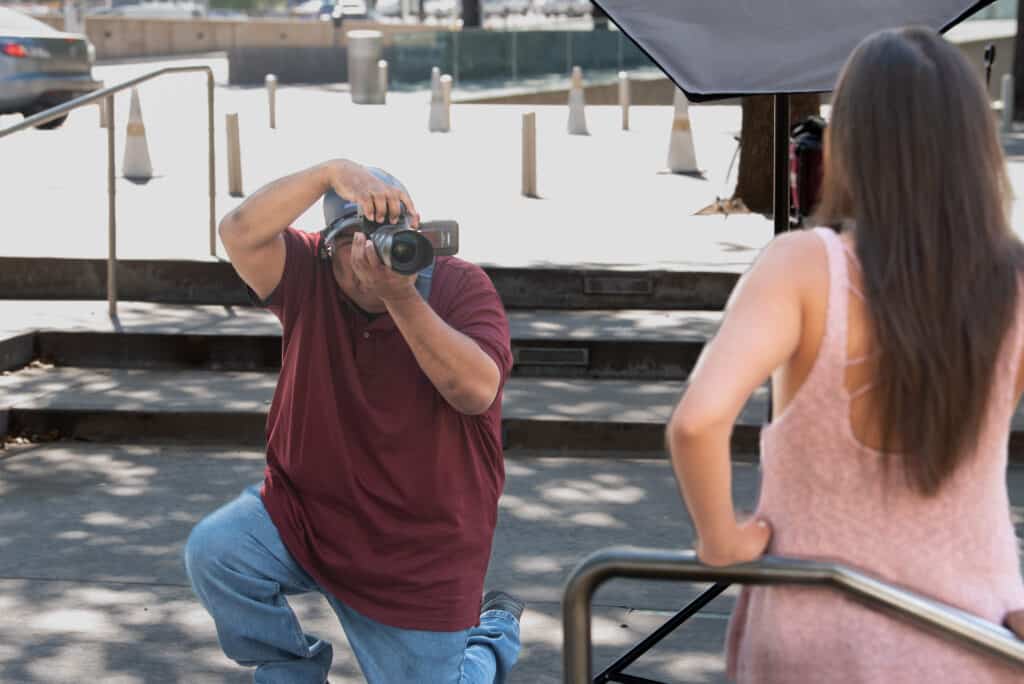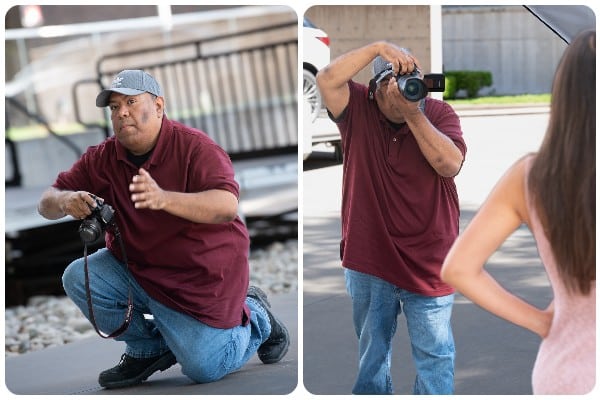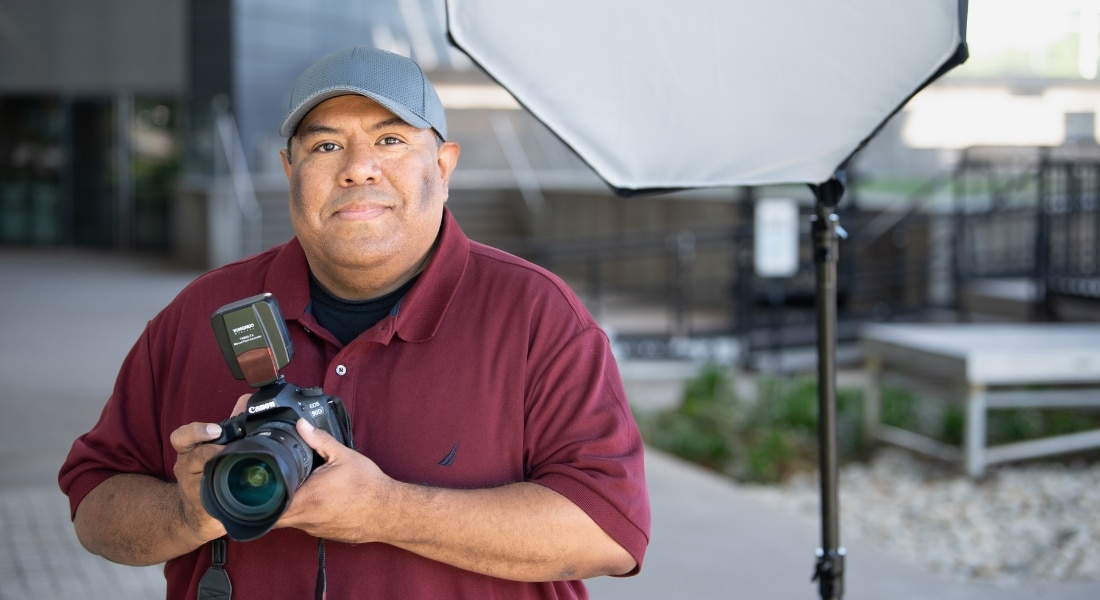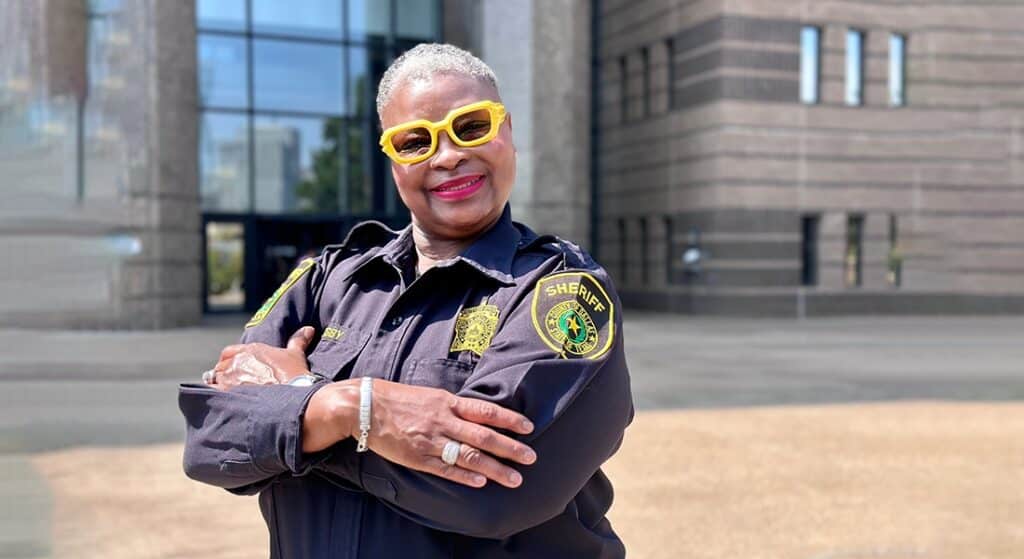For Cesar Zapata, a case of kidney stones led to a shocking cancer diagnosis and robotic surgery at Methodist Charlton Medical Center — followed by a picture-perfect recovery for this 44-year-old Dallas photographer.
“The cancer is now out of my system, and I have a good feeling it won’t come back,” Cesar says. “I’m glad everything went well. My recovery went really fast, and I feel great.”
Cesar was back on his feet the day of his surgery thanks to his skilled medical team and their use of robotics, a minimally invasive approach that allows surgeons to access hard-to-reach areas with a high degree of precision.
“Robotics is not for every single case,” says his doctor, Srinath Kotamarti, MD, urologist and urologic oncologist on the medical staff at Methodist Charlton. “However, for the right case, it does change the game.”

FINDING PEACE OF MIND
Cesar’s ordeal began late last year with abdominal pain, multiple trips to the emergency department, and an initial diagnosis of kidney stones. He was later referred to Dr. Kotamarti after CT scans ultimately revealed a small cancerous mass on Cesar’s left kidney.
“The symptoms of kidney cancer — blood in the urine, weight loss, bone pain — we typically don’t see them until it’s advanced enough where it’s a real problem,” says Dr. Kotamarti, who notes the importance of scans such as ultrasounds, CT, or MRIs to detect problems before symptoms can appear.
At Methodist, we don’t just focus on your cancer. We care for you as a whole person. Learn more at MethodistHealthSystem.org
The urologist ordered additional tests, including an MRI to get a full picture of what was going on before presenting Cesar’s options.
“When I first talked to Dr. Kotamarti, he already knew everything,” he says. “He gave me a lot of peace of mind, so I was very calm after talking to him.”
Following his surgeon’s recommendation, Cesar had the tumor removed on January 9, 2024, becoming the first robotic surgery of its kind performed at Methodist Charlton.
“Kidney surgery has radically changed over the past several years, and the future is so bright for this program,” Dr. Kotamarti says. “It’s got the potential to really provide a huge service to our community and beyond. It’s going to help our patients at Methodist Charlton tremendously.”

OPTING FOR ROBOTIC SURGERY
During the procedure, known as a partial nephrectomy, the surgeon used the da Vinci Xi Surgical System through several small incisions in a laparoscopic approach to cut out the tumor and leave the remaining kidney in place.
“We’re able to manipulate things in a more elegant fashion.” Dr. Kotamarti says. “Patients don’t need to stay several days in the hospital after a big surgery.”
Dr. Kotamarti further explained that identifying which candidates with kidney tumors are ideal for robotic partial nephrectomy depends on many factors, such as size, tumor location, overall kidney function, and other medical problems.
“For the right patient, the outcomes are optimized with the robotic approach,” Dr. Kotamarti says.
Two weeks after surgery, Dr. Kotamarti told Cesar that the base of his kidney was clear of cancer. He plans on following up with him every three months.
For his part, Cesar was pleased to be a candidate for the robotic approach, even more so when the promise of a quick recovery became a reality.
“I’m glad everything went well,” he says. “I am happy about the surgery. I’m at peace right now.”






